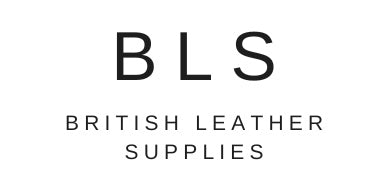
10 Leathercraft Projects Made Easier with a Leather Awl
10 Leathercraft Projects Made Easier with a Leather Awl

Leathercraft is a rewarding and creative hobby, but anyone who’s tried their hand at it knows the tools you use make all the difference. One essential tool that’s a game-changer for both beginners and seasoned crafters alike is the leather awl. This simple tool greatly improves precision and efficiency, whether you’re hand-stitching, marking cuts, or punching holes.
If you’ve been curious about how a leather awl can enhance your work, this guide explores 10 leathercraft projects where it becomes an essential companion. By the end, you’ll see why it’s the unsung hero of any leatherworker’s toolkit.
Why a Leather Awl is Essential in Leathercraft
A leather awl is a pointed tool designed to pierce, mark, or punch holes in leather. It’s uniquely suited to the challenges posed by tough, durable materials. Unlike knives or hole punches, a leather awl allows you to work with precision, adding finesse to your craftsmanship.
Whether you’re stitching pieces together, creating intricate patterns, or prepping leather sheets for assembly, an awl ensures your work is detailed and accurate. Here are ten creative leathercraft projects where this tool truly shines.
1. Hand-Stitched Leather Wallets
Wallets are a classic leathercraft project, perfect for honing your hand-stitching skills. A leather awl ensures that stitching holes are perfectly spaced and aligned, resulting in clean, professional-looking seams. The awl pierces the leather without tearing it, helping you maintain the material’s integrity.
Pro Tip:
Use an awl with a diamond-shaped tip for holes that fit stitching thread precisely and reduce the risk of uneven stitches.
2. Elegant Belts
From casual belts to formal wear, crafting a leather belt involves precise hole spacing for both the buckle and adjustable notches. A leather awl gives you control over placement, allowing you to punch evenly spaced, perfectly sized holes.
Pro Tip:
Mark your hole placements using the awl's tip before punching them through entirely. This ensures consistency and accuracy.
3. Custom Leather Knife Sheaths
Knife sheaths are a functional and aesthetic accessory, requiring snug seams and precise edge work. A leather awl is indispensable for stitching layers of leather together evenly, especially when working with thick materials.
Pro Tip:
Use a stitching awl to pre-pierce multiple layers of thick leather. This makes hand-stitching smoother and prevents your needle from bending or breaking.
4. Handmade Leather Journals
Whether you’re binding a leather journal for personal use or as a gift, an awl helps achieve a polished look. Use it to punch stitching holes for binding or even to add decorative accents to the cover.
Pro Tip:
Experiment with different awl tips to create small patterns or perforations that give your journal a unique look.
5. Leather Watch Straps
Creating a leather watch strap requires attention to detail due to the small size and fine stitching. An awl makes it easier to punch tiny holes for stitching and for the strap's adjustable sizes without damaging the leather.
Pro Tip:
Use double-sided tape to hold pieces in place momentarily, then use the awl to pierce evenly spaced holes before stitching.
6. Decorative Tool Rolls
Tool rolls are an excellent way to combine practicality with creativity. Whether you’re making a roll for paintbrushes, knives, or leatherworking tools, an awl comes in handy for clean stitching lines and durable seams.
Pro Tip:
Map out your stitching path using the awl before running stitches along it. This adds a personal touch and ensures precision.
7. Stylish Leather Tote Bags
Tote bags involve large sections of leather stitched together, making alignment crucial. A leather awl helps you maintain straight lines for hand-stitching leather, especially along wide seams or edges.
Pro Tip:
For thick leathers, use a pricking iron to mark the spacing and an awl to pierce deeper. This leads to a stronger and cleaner stitch.
8. Leather Key Fobs
Key fobs are a great beginner project since they’re small and require minimal materials. A leather awl simplifies the process by ensuring clean holes for stitching leather or securing hardware like leather rivets and snaps.
Pro Tip:
Opt for a scratch awl for leathercraft to mark designs or outlines on the leather before cutting and stitching—it’s precise and easy to handle.
9. Unique Leather Coasters
Custom coasters are another beginner-friendly project that lets you explore leathercraft designs. Use an awl to emboss or trace patterns into the surface for a personal touch, or to create holes for decorative stitching.
Pro Tip:
Experiment with different awl tips to achieve various textures or designs on the leather.
10. Leather Sandals
Handcrafted leather sandals represent both creativity and precision. An awl ensures you can secure straps and layers without compromising the leather’s strength. It’s also perfect for creating custom designs or perforations that aid airflow.
Pro Tip:
Align strap holes on both sides by using an awl to mark exact matching points before punching through.
How to Care for and Maximise Your Leather Awl
To ensure your leather awl lasts and performs well over time:
- Keep it sharp: A dull awl can tear instead of piercing cleanly. Regular sharpening is key.
- Use the right awl for the job: Scratch awls, stitching awls, and diamond-tip awls all serve different purposes.
- Work on a stable surface: A sturdy cutting mat or workbench prevents the leather from slipping.
Craft With Confidence
Whether you’re a beginner or a pro, a leather awl is an essential leathercraft tool that elevates your leathercraft projects. It offers precision and control, allowing you to bring your creative visions to life across a variety of designs.
Looking to upgrade your leathercrafting tools? Browse quality leather awls and other essential tools at your local craft store or online. With the right tools in hand, there’s no project you can’t tackle.
Happy crafting!
